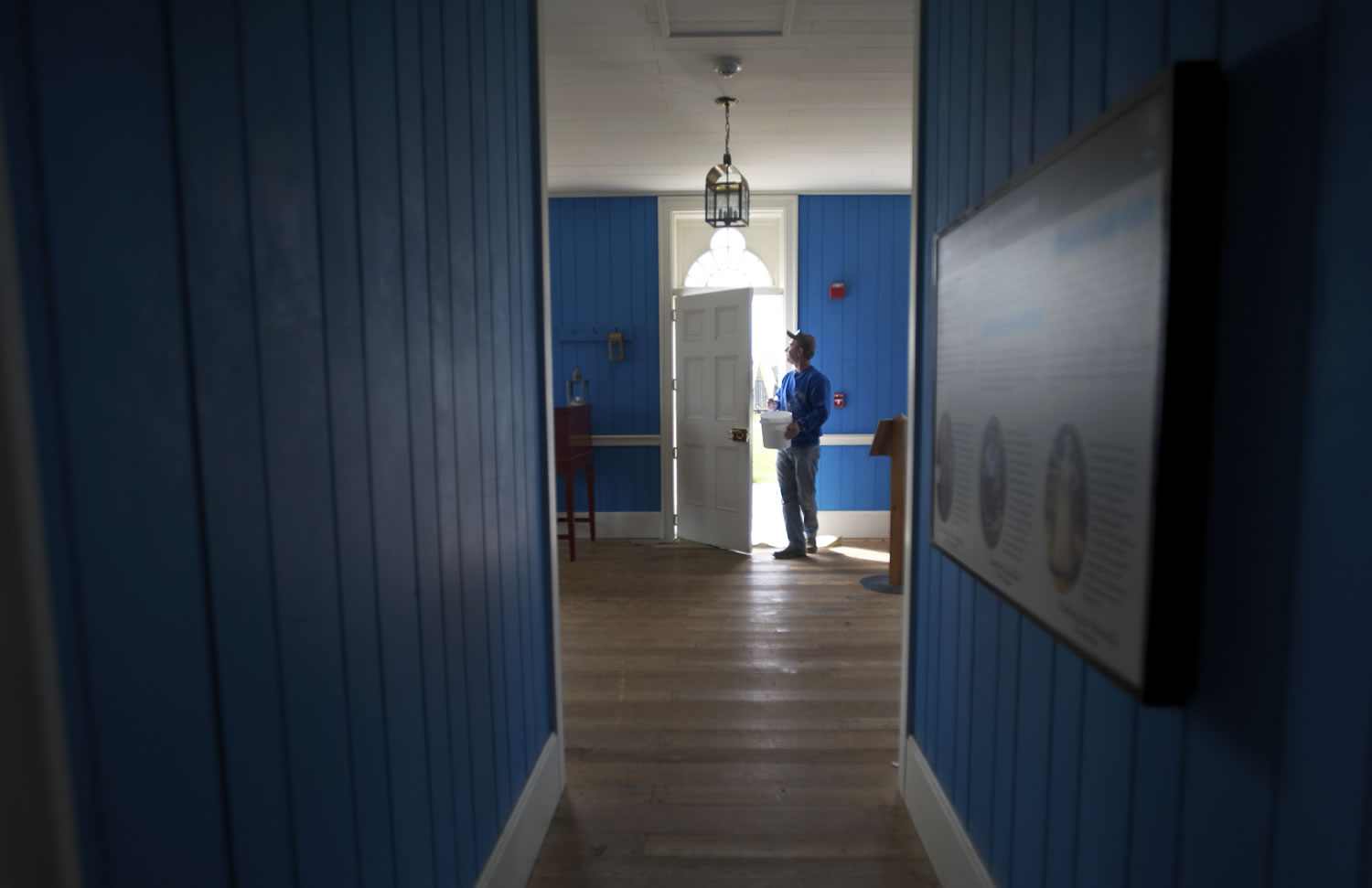They might seem insignificant, but tiny flecks of paint found at the Fort Vancouver National Historic Site have a story to tell.
The faded specks, found on chunks of brick and wood unearthed beneath the Chief Factor’s House and Counting House, point to a time when the Hudson’s Bay Company wanted to impress people with its opulence.
“Painting was very expensive back then,” said Greg Shine, the fort’s chief ranger. “They had to import powdered pigments from Europe, and that displaced other materials that they were bringing over on ships. Using paint was really a way the Hudson’s Bay Company could represent its wealth and power.”
Those flecks, found over the years in archaeological investigations of the area, also have a modern role at the reconstructed site — they form a guideline for the National Park Service repainting of two buildings at the site this week.
“We use modern paints on the buildings, but the paints are chosen to match the historic colors and types from the past,” Shine said.
The Park Service started repainting the Counting House and Bake House at the site on Tuesday and are set to finish the effort on Saturday. The two buildings could be considered book ends for how painting was done at the site back in the 1830s.
The Counting House, like the Chief Factor’s House, was the center of commerce and a highly symbolic building for the company. It’s where officials did the bookkeeping and took care of correspondence for the company. The Counting House and Chief Factor’s House were given fancy paint jobs, both inside and out, to reflect their importance, Shine said.
The Bake House and other support buildings, on the other hand, were given a much less opulent whitewash with a solution of lime and water, which was thought to disinfect the buildings, said Bob Cromwell, an archaeologist at the park.
“It was a sanitary method,” Cromwell said. “They thought it kept things clean.”
Back then, people thought that diseases spread through bad smells rather than germs. Malaria, a common disease at the time, actually means “bad air” in Italian, although today we know that it’s spread by mosquitoes.
“They’d use lime in outhouses because they thought the bad smells caused disease,” Cromwell said. “They’d also burn wood and create a lot of smoke because
they thought it would keep disease away. And in a way it did, because it probably kept mosquitoes away.”
Less opulent buildings at Fort Vancouver were coated inside and out with the lime whitewash, but the method was crude. Lime is corrosive, and it also washes off quickly in rain, so they had to frequently apply new coats, he said.
Paint flecks found from the Chief Factor’s House and Counting House also revealed some surprises when the Park Service first analyzed them several years ago.
The outside of the buildings were a creamy white color, but inside “the colors were very bold and very bright,” Shine said. “There were bright blues, bright oranges, bright yellows, bright greens. That was very surprising to me.”
Visitors through the area at the time noted that they were impressed that anything in the area had been painted at all. The buildings were likely two of the first in the Pacific Northwest to be painted in the European style, Cromwell said.
“It was very unusual,” Cromwell said. “The bright indoor paint also had a purpose, though. They needed good lighting — this was before electricity — and the bright color scheme enhances the natural light.”
When the interiors of those buildings were painted, archaeologists used data from the paint flecks they found and matched them with a watercolor painting from the time to determine colors for the walls.
Beyond the white paint, exteriors of the prominent buildings also used weather siding to help prevent rain damage, something that was equally unusual for the time, Shine said.
In the exterior repainting of the reconstructed buildings, work crews are actually just using one type of paint. But it settles on the weather boarded Counting House much more brightly than it does on the flatter Bake House, thus giving two looks that attempt to mimic what the site looked like in the past, said Alex Patterson, facilities manager.
“We’re just using a latex white paint, same color, on both buildings,” Patterson said. “We’re relying on the texture of the material to give us a juxtaposition.”
Crews painted the Chief Factor’s House last summer using the same paint. It cost $9,980 for that building and will cost $5,530 for the Counting House and $3,525 for the Bake House when work is finished, he added.
Cromwell said he’s constantly amazed that something like paint flecks can end up playing such a large role in determining the history of a site, but that’s part of the fun of archaeology.
“It allows us to get to a certain degree of accuracy with these reconstructions that we couldn’t do otherwise,” Cromwell said. “To be able to use that to present a more complete picture to the public — that’s lovely.”



